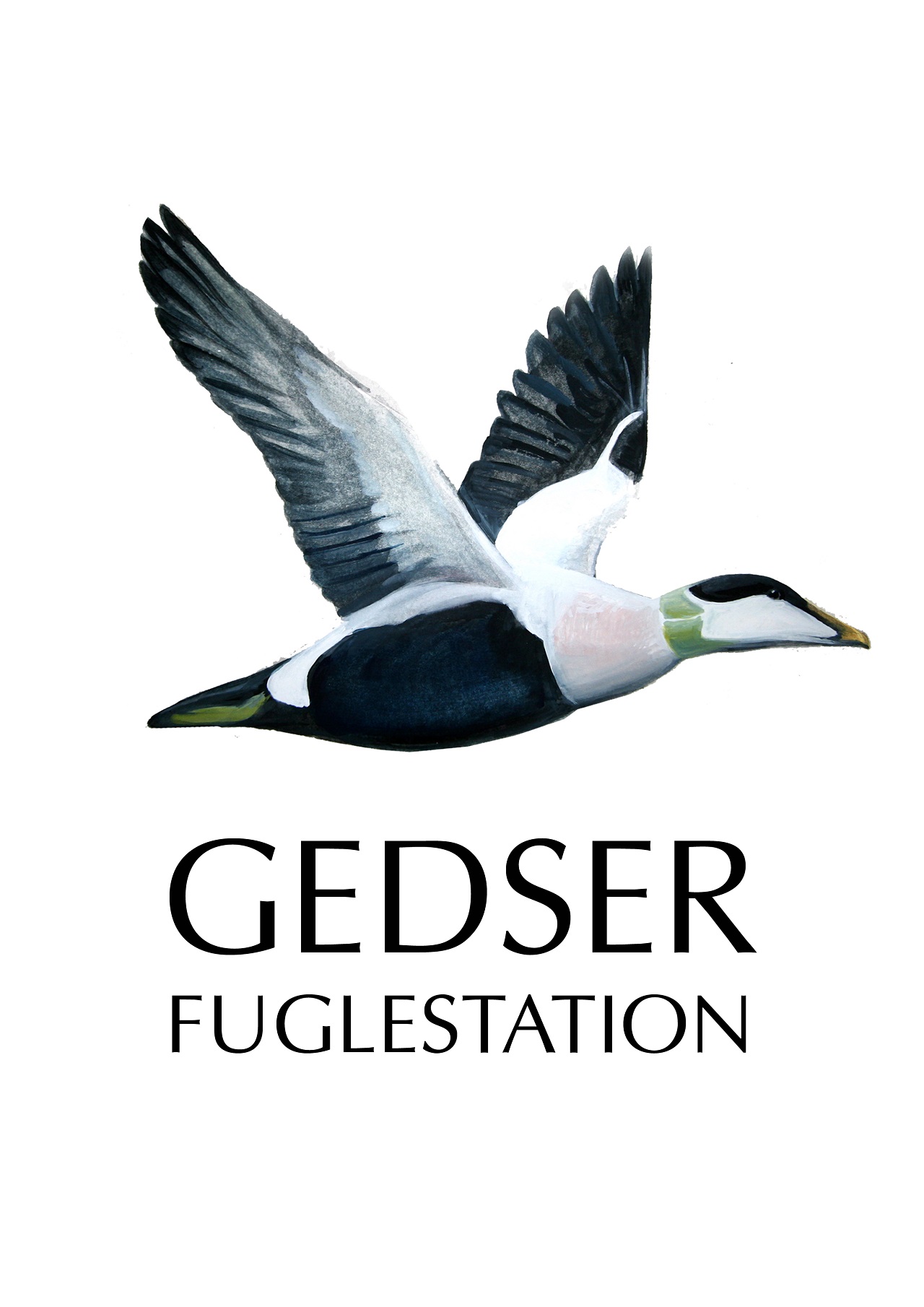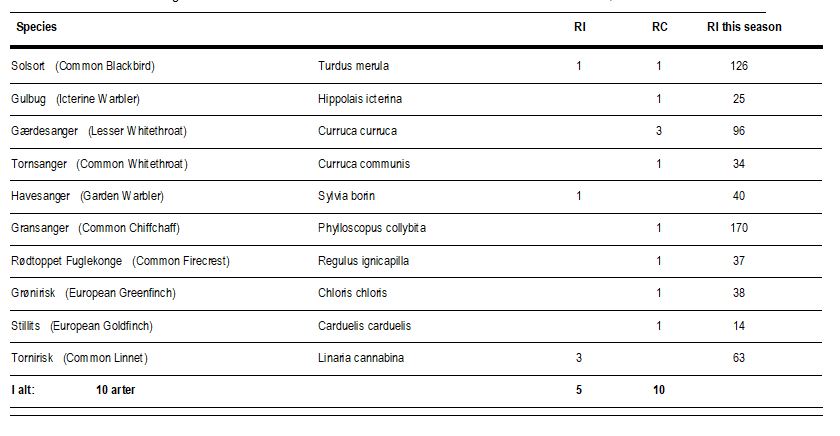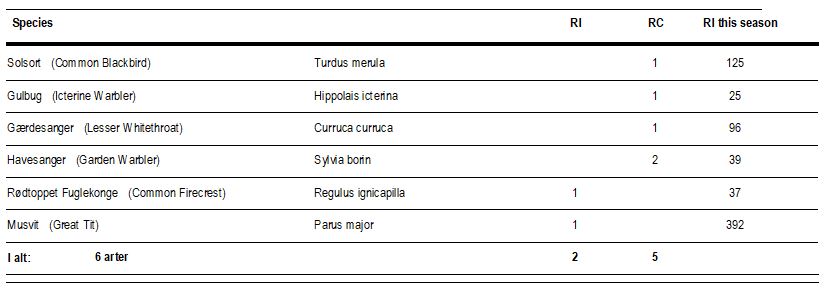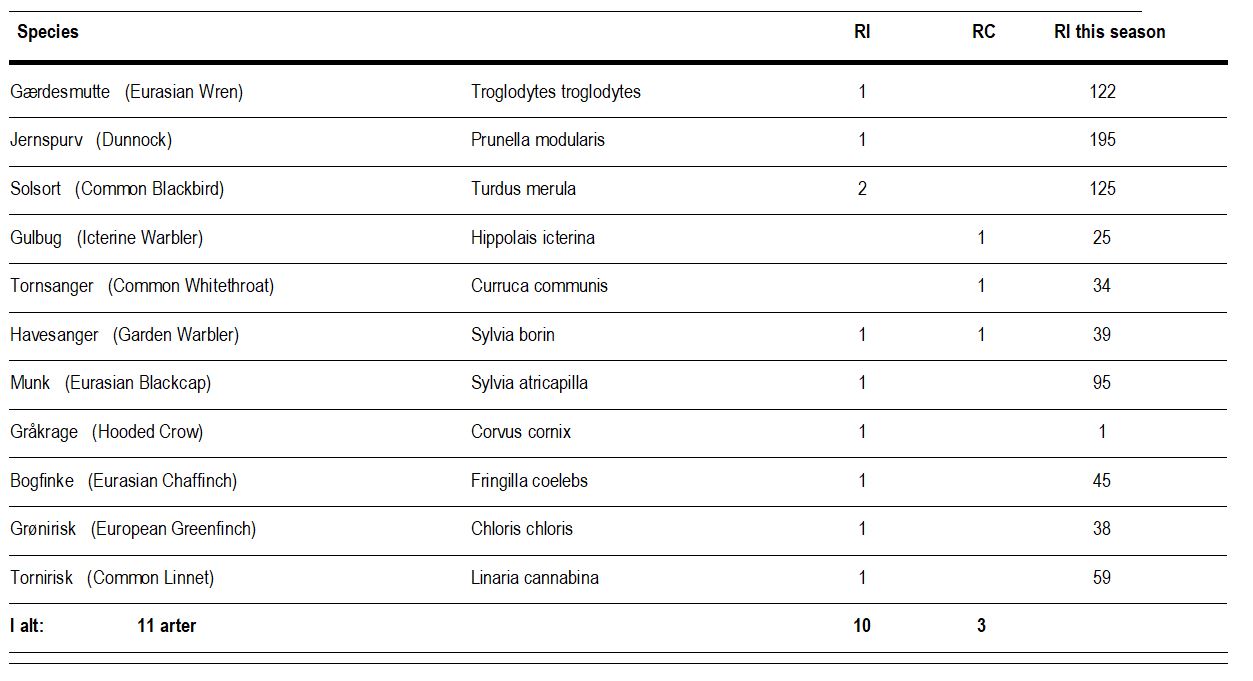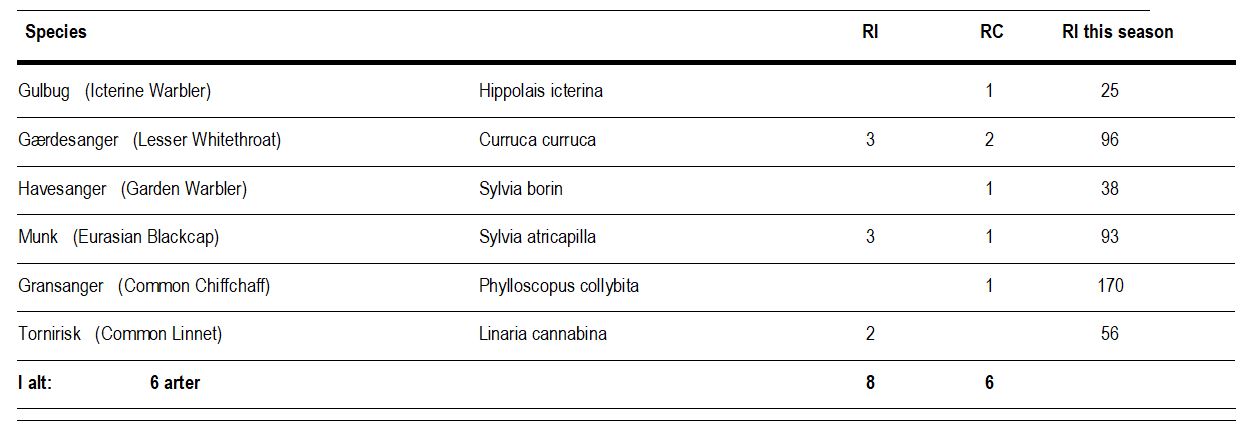Gedser Fuglestation Blog
Her på Gedser Fuglestations blog bringes korte nyheder i dagbogsformat om hændelser på fuglestationen.
Tårnfalk chicks and a rare bug
The ringing:
This morning meant mainly cutting branches in the garden. In between, there were four birds in the nets. One of them was new: A Linnet “Tornirisk”.
In the closing round, we heard a Rosefinch “Karmindompap” near the garden. It is not so common as just about one and a half weeks ago, to hear them now. They have mainly continued their journey.
In the afternoon, there were some more young birds to ring: Some Kestrel “Tårnfalk” chicks in a nestbox at a residence not so far from Birkemose. Hans, Gert and I went there and it was five little Kestrels “Tårnfalk” in the nestbox!
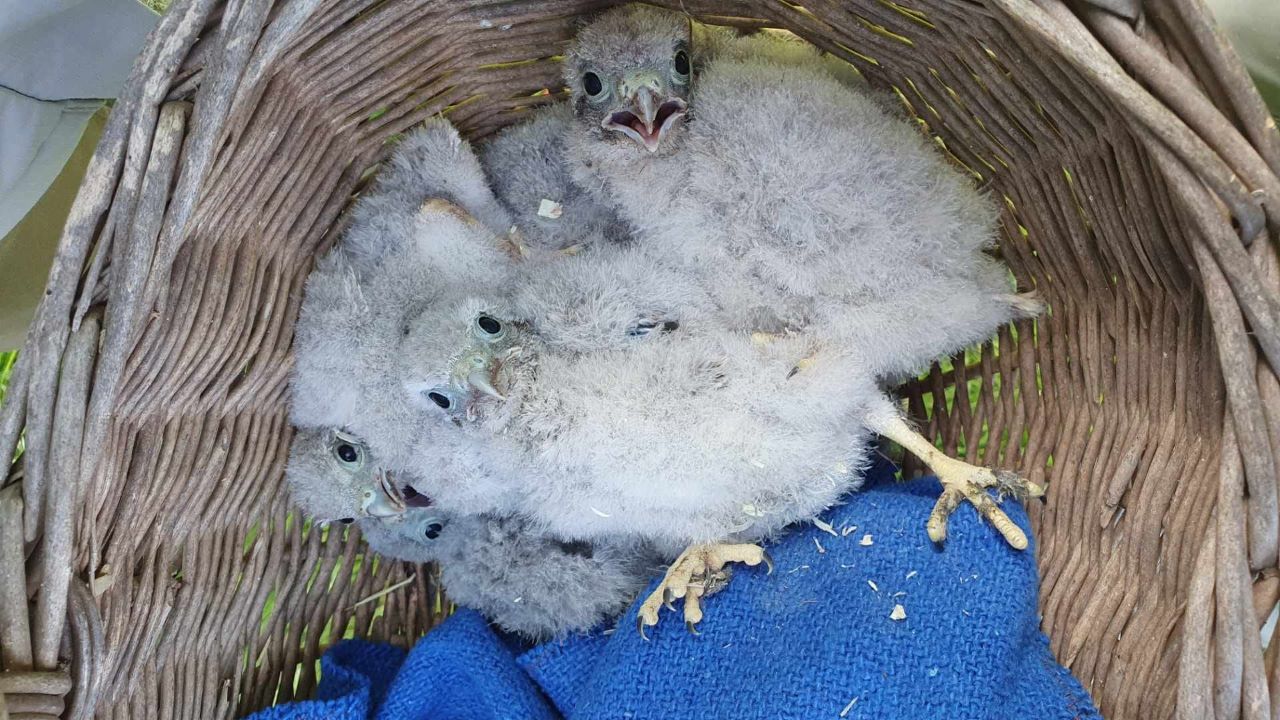
Kestrel "Tårnfalk" chicks
Before we left to the nestbox, we had some home-made cake from Tina, that she brought to the station and we all enjoyed it together. Tak for kage!

After, Jasper and Tina had a meeting about the university project Jasper is working on: The comparison of measurements from ringing data of two species of short-distance migrants and two species of long-distance migrants.
The moths:
Again, a windy night that did not bring many moths. I had four species in the trap, Hans got three and a little wasp (Ancistrocerus sp.) in his trap. One of his catches I hope also to get in the trap soon, Sideritis reticulata “Netmønstret nellikeugle”.
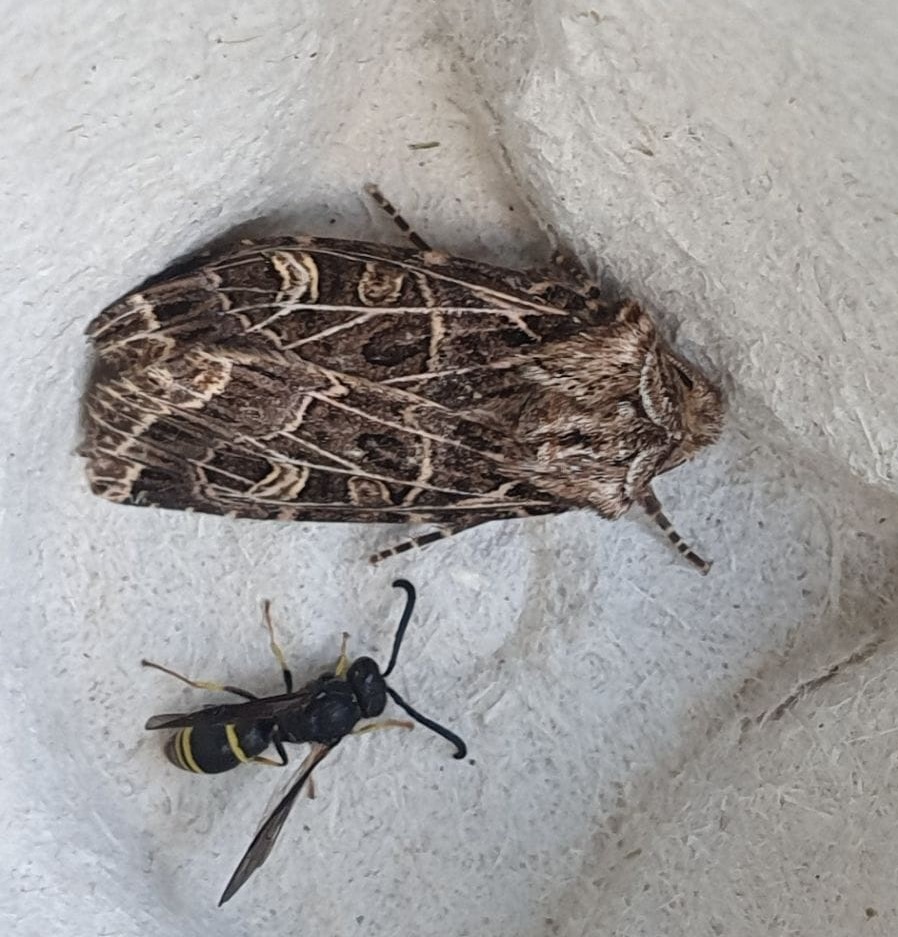
Sideritis reticulata “Netmønstret nellikeugle” and Ancistrocerus sp.
Hans found a bug in his garden today which we all did not think to have seen before. With the help of the apps, it could be identified as Rhyparochromus vulgaris. The Arter-app just showed three observations of that species in Denmark. So I got a bit alerted and asked the beetle and bug-expert Magnus, at the moment volunteer at Skagen bird observatory. He could confirm the species and told me, that is a rare finding! The first one was found in Denmark in 2011. So really cool!

Rhyparochromus vulgaris
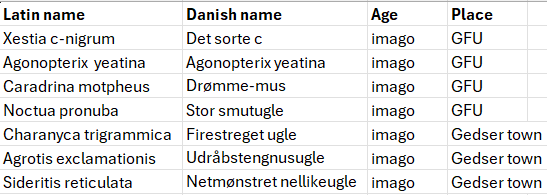
På stationen: Henrik Jørgensen, Hanelie Sidhu, Jasper Mosman, Lara Chrenkova. Gert Jeppesen, Hans Lind, Mads and Tina Elley
Våd morgen
Ringmærkening:
Der var lovet mulighed for lidt regn, men det blev til noget mere end lidt da vi blev ramt af byge efter byge. 6.40 måtte vi lukke ned i små 2 timer da regnen blev for kraftig og der ikke var udsigt til tørvejr.
Men på trods af det våde vejr fik vi heldigvis fanget lidt selv om det var lidt tyndt.
 1K Bogfinke
1K Bogfinke
I morgen kan der komme lidt regn tidligt men det ser ikke ud til at blive noget særligt.
Sidst på eftermiddagen kom Gert og han blev til aften sammen med Tulle.
The moths:
First of all, I need to apologise, there was a mistake in the moth list of yesterday's blog. Hans did not catch Syngrapha interrogations, which would be very rare here, but Agrotis exclamationis “Udråbstegnsugle”. I also added one species that he had in his garden to yesterday´s list, Dysstroma truncate “Jordbærbladmåler”. The actualised list is now on yesterday's blog.
But now to today´s moths. I just had six moth species in the trap today. That was probably due to the very windy night. My favourite of today was Hypena proboscidalis “Snudeugle”.
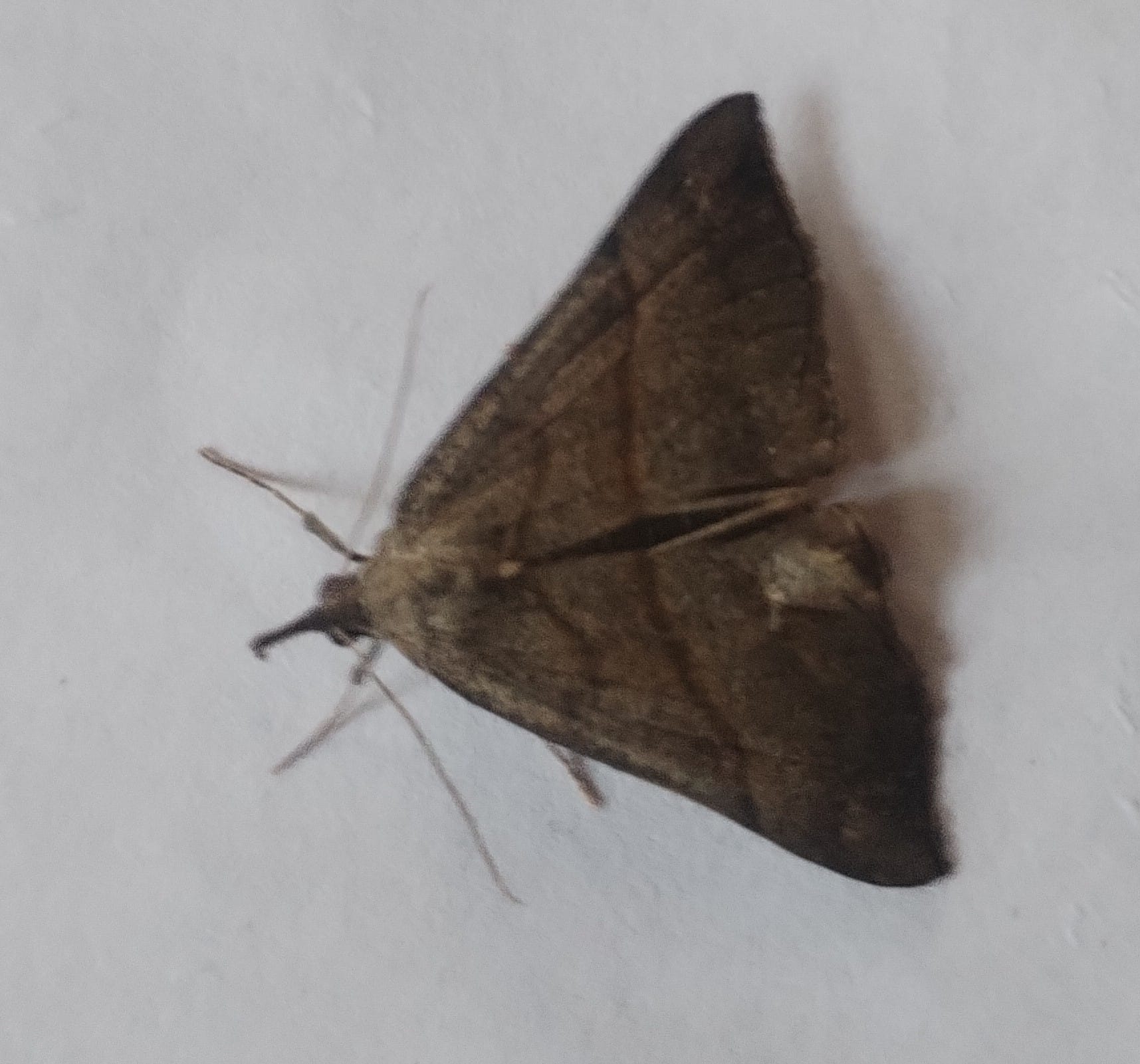
Hypena proboscidalis “Snudeugle”
Hans did not have more luck in his garden. But he had a very nice species, Hectatera bicolorata in his trap.

Hectatera bicolorata
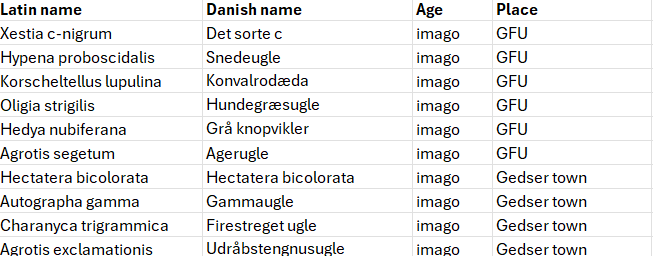
På stationen: Henrik Jørgensen, Hanelie Sidhu, Jasper Mosman, Lara Chrenkova. Gert Jeppesen (og Tulle).
Collared Pratincole “Rødvinget Braksvale”!
The ringing:
This morning, there was too much rain to open the nets. So we could just crawl back to our beds, after checking the radar and looking out of the door in the rain.
The moths:
After yesterdays two species that I found in the trap, I was not expecting many in the trap today, after a rainy night. After going back to bed after we saw, that we could not ring today, I checked the trap later in the morning, when I got up. But I was positively surprised, as there were quite many species in the trap, 22 I found out after doing the list. But it is a long list, because Hans also had his trap out today in his garden. Later in the morning, he came to the station with a moth that was new for me, which was very nice: it was Evergestis forficialis “Kålhalvmøl”. He also handed me a list with the species he caught today, so I have also put his moth in the list, under the location Gedser town.
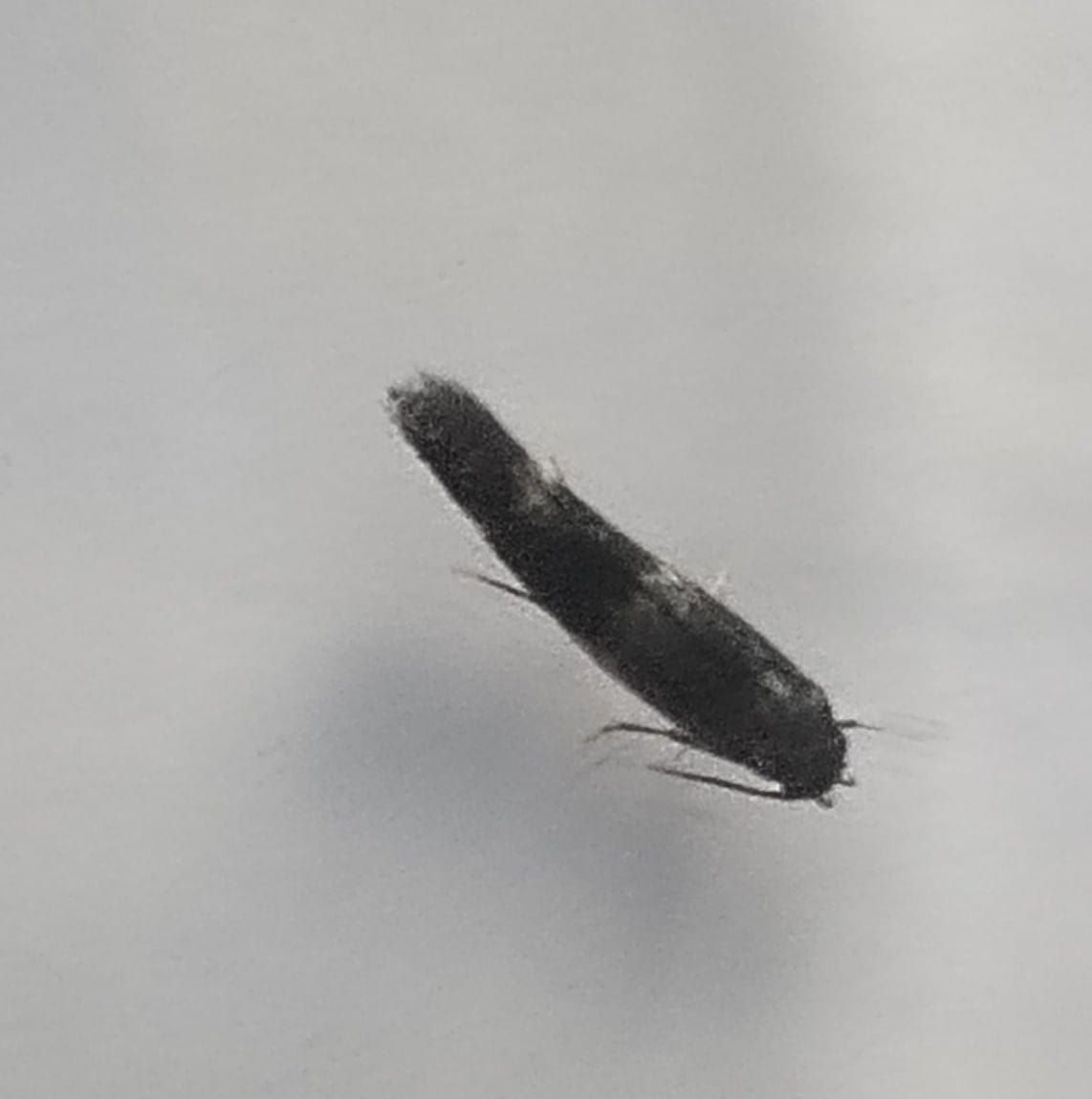
A micro moth: Mompha subbistrigella
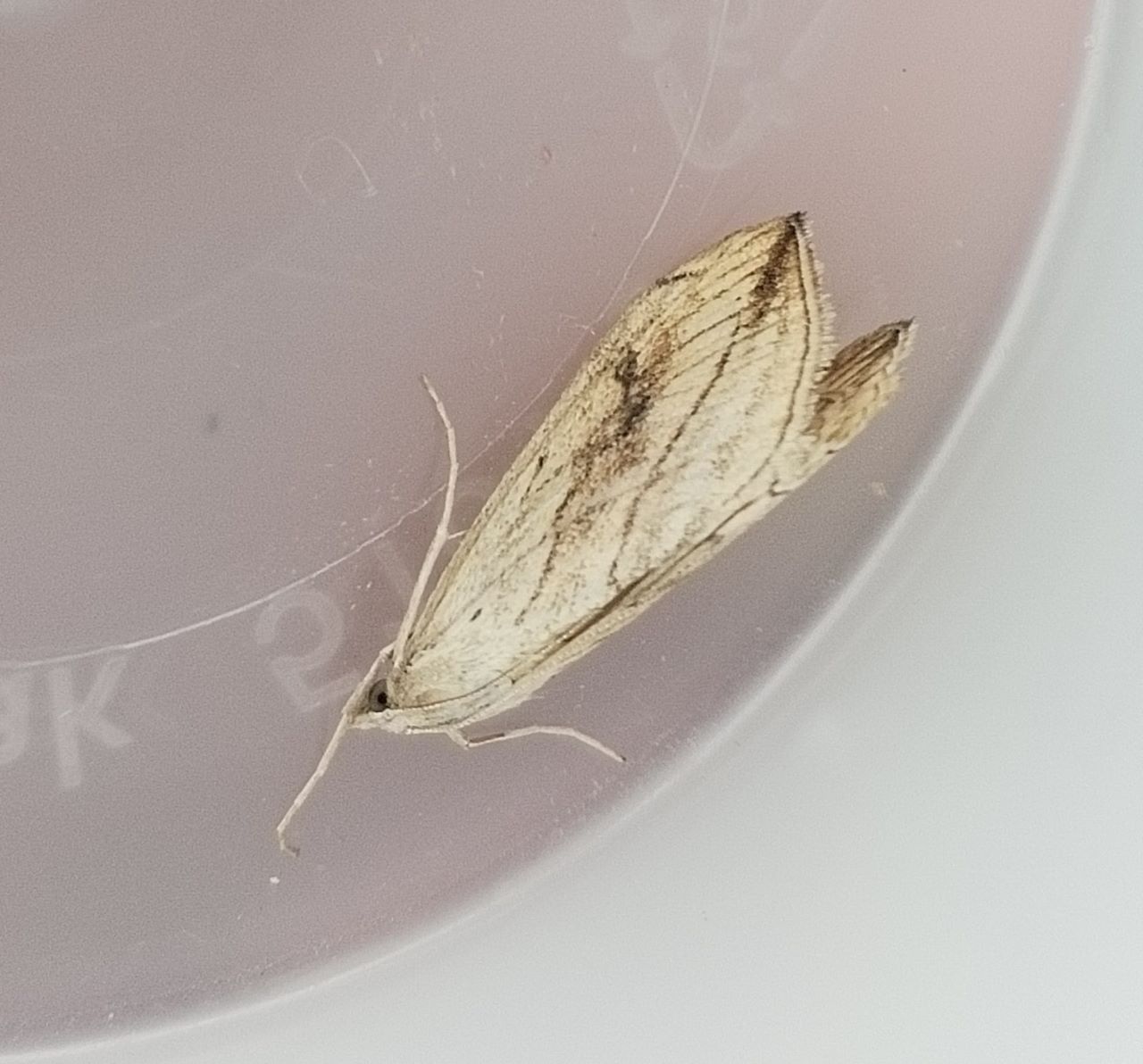
From Hans garden: Evergestis forficalis
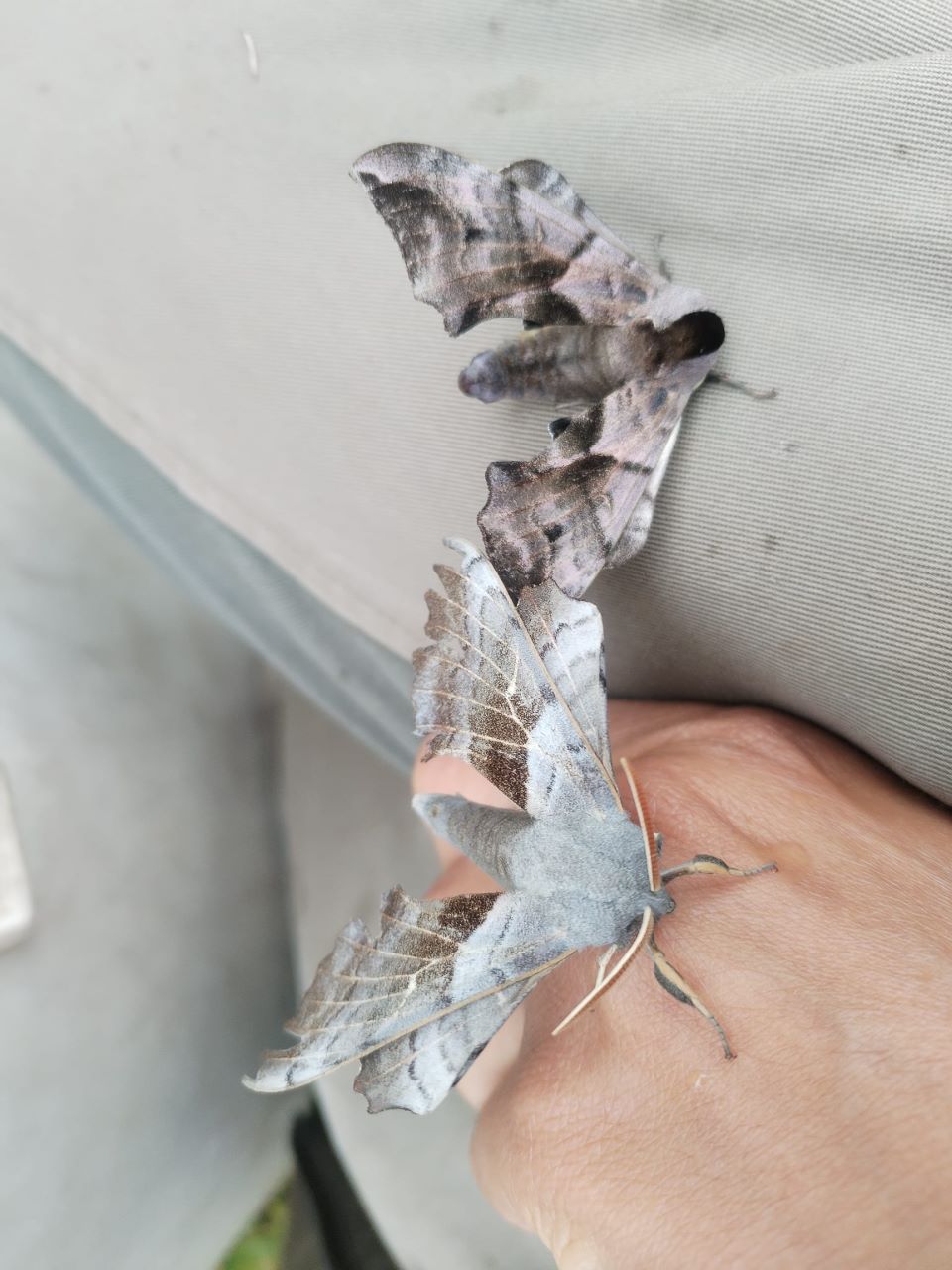
Laothoe populi "Poppelsværmer" (left) and Smerinthus ocellata "Aftenpåfugleøje" (right)

Collared Pratincole “Rødvinget Braksvale”
Congrats and thanks to Jørgen Hulbæk who found a Collared Pratincole “Rødvinget Braksvale” in Faxe kommune yesterday afternoon! Today, Tina, Mads, Gert, Lara, Henrik and I went to see it. When we saw a lot of cars next to a field, we knew, we were at the right place. The bird was just sitting next to a tuft of grass nearly all the time we were looking at it. So we did not have to wait for it, we saw it right away after arriving. But now, everyone was waiting for it to fly and it also did us the pleasure just when we were talking about going back. So it was a perfect twitch and also perfect timing, as just when we drove away from the field, it started to rain. Tak for turen to Tina and Gert!
People: People: Hans Lind, Henrik Jørgensen, Gert Jeppesen, Tina and Mads Elley, Jasper Mosmann, Lara Chrenkova, Hanelie Sidhu
A trip to Klinteskov on Møn
The ringing:
Today, there was a little improovement to yesterday. In the morning, we had 14 birds in the nets. Just four newly ringed though. In the afternoon, Henrik caught the 15th bird of today by hand: it was a newly fleged Blackbird "Solsort" which was so small, that it couldn´t even fly. Henrik ringed it and then it was released. Young Blackbirds "Solsort" leave their nests a few days before they can fly. Their parents will still come and feed them and after a few days, they will fly like the big.
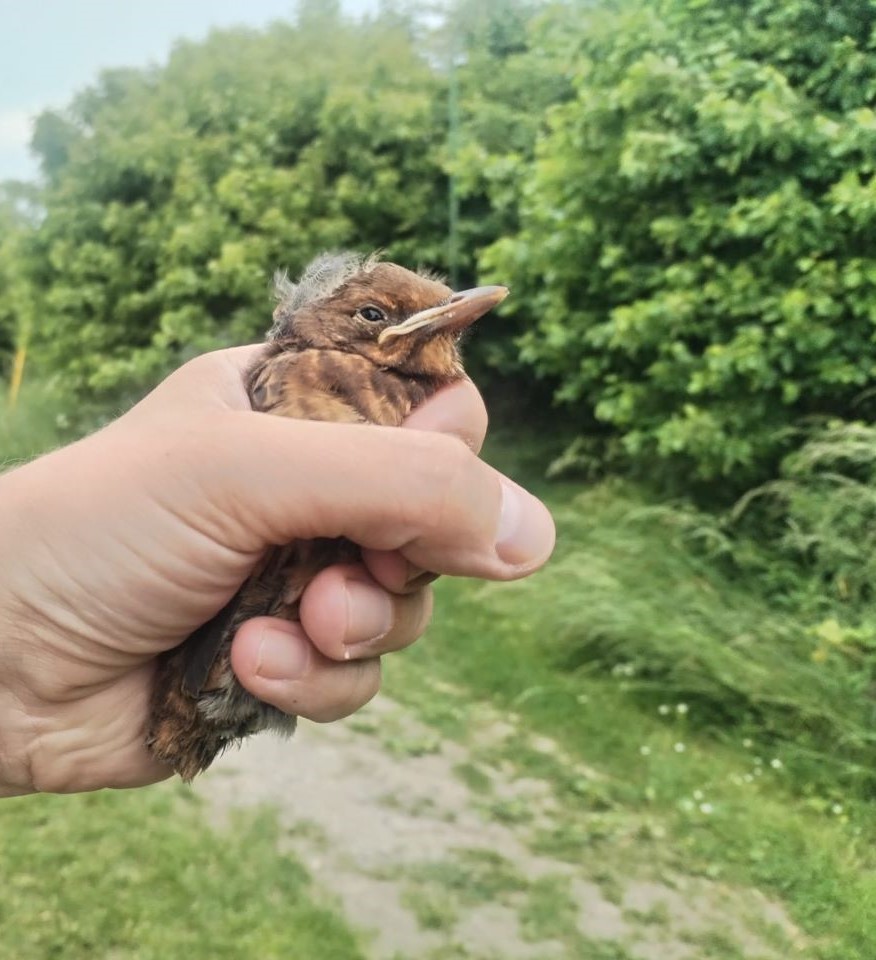
1K Blackbird "Solsort"
The moths:
The windy night did not make many moths fly. It was a bit sad opening the trap and just finding two of the most common moth species. On our trip to Stor Klinteskov near Møn, I managed to catch a few, so the list is a little longer. For this blog, a picture of Hypochalcia ahenella “Bakkehalvmøl”.

Hypochalcia ahenella “Bakkehalvmøl”

Trip to Klinteskov on Møn:
Today some of us went on a trip to Klinteskov on Møn to see different species of orchids and a lot of other flowers. We were also looking for butterflies and other insects but there weren’t many because it was windy with some showers. The area was different compared to most of Denmark as it had hills covered in bushes, trees and meadows with varying species of flowers and trees. There were a few species of birds as well like the Thrush Nightingale "Nattergal" and the Eurasian Skylark "Sanglærke".
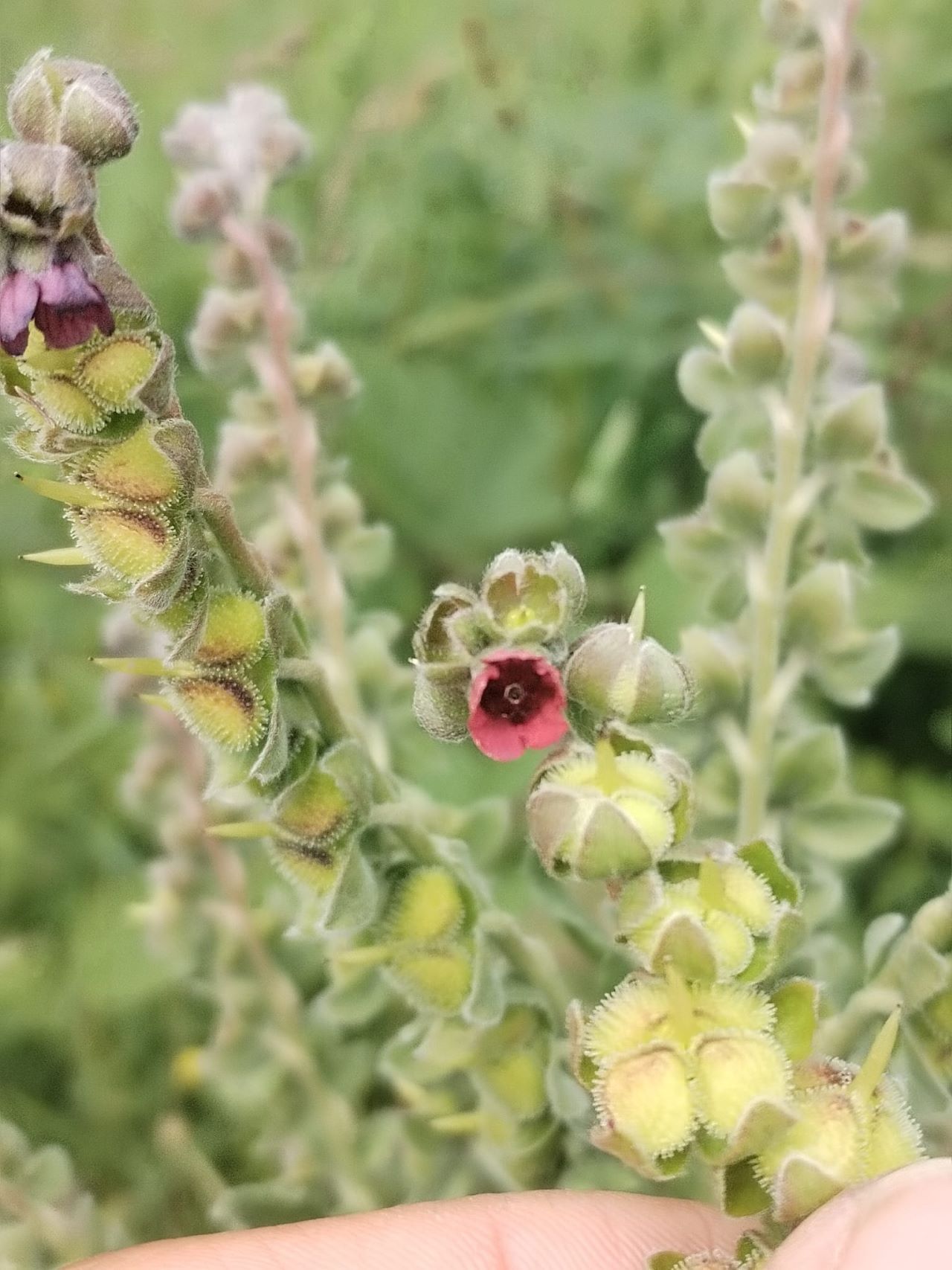
Cynoglossum officinale "Hundetunge"
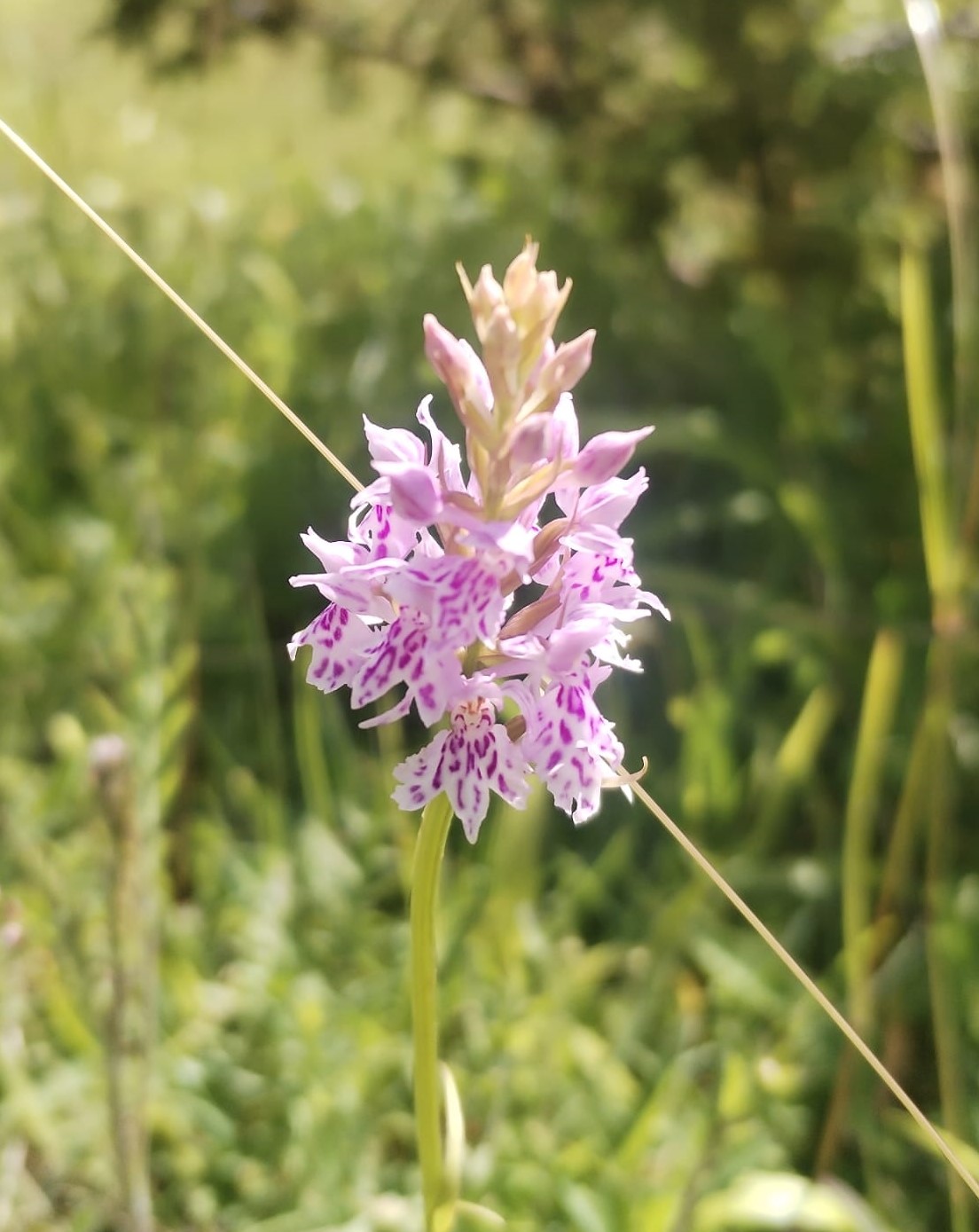
Dactylorhiza maculata subsp. fuchsii "Skov-gøgeurt"
People: Hans Lind, Henrik Jørgensen, Ole Friis Larsen, Jasper Mosmann, Lara Chrenkova, Hanelie Sidhu
An unexpected Rødtoppet Fuglekonge!
Nye tal viser, at Gedser Fuglestations blog er set eller endda læst 1,9 millioner gange, siden vi begyndte at skrive dagbogen/bloggen for ni år siden. Vi skriver cirka 280 dage om året. Det betyder, at dagbogen i gennemsnit bliver set 750 gange hver dag. Tusind tak til alle, der viser vores arbejde på fuglestationen den store interesse.
The Ringing: Cold wind and quite some leaves in the nets, a cloudy sky, me taking my hat on. That nearly sounds like autumn! Just the fact, that most leaves were green, the Swifts “Mursejler” on the sky and the brood patches on quite some of the few birds I had in hand today did not really fit into that picture. No, it is supposed to get summer… Also the new ringed birds of today gave more the feeling of autumn or early spring. But with a little surprise, very little, just 5,3 grams. In the second round,
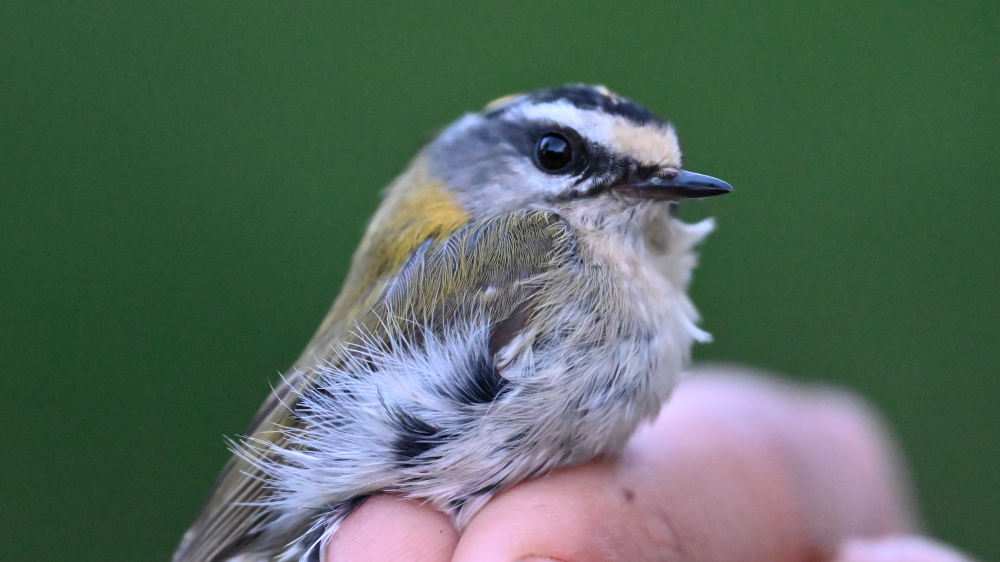
I took a Firecrest “Rødtoppet Fuglekonge” out of one of the nets. Gedser is definitely the best place for Firecrests “Rødtoppet Fuglekonge”, but it is mainly early spring, from mid-March to the beginning of April, that we are getting them in the nets. So this was nice, but there was not much following. One new Great Tit “Musvit” and a few recaps, among them a Garden Warbler “Havesanger”, that Hans ringed in May 2018!
The moth: The first rainy and then windy night did not make many moths flying. I will show Grapholia funebrana "Blommevikler", as I think we did not catch it before.
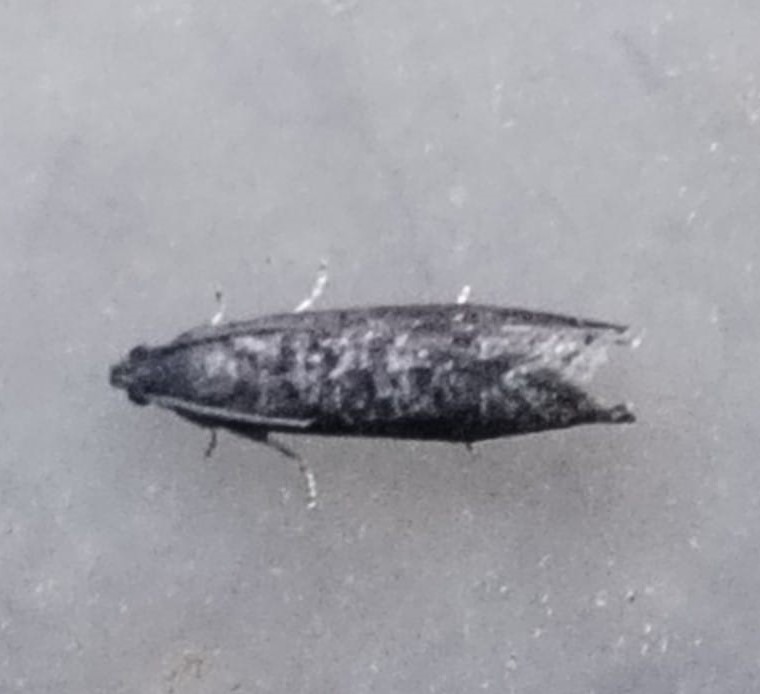 Grapholia funebrana "Blommevikler"
Grapholia funebrana "Blommevikler"
There was also Scopalia ambigualis in the trap, it is quite common in the traps now, so maybe you can also find and recognise it.
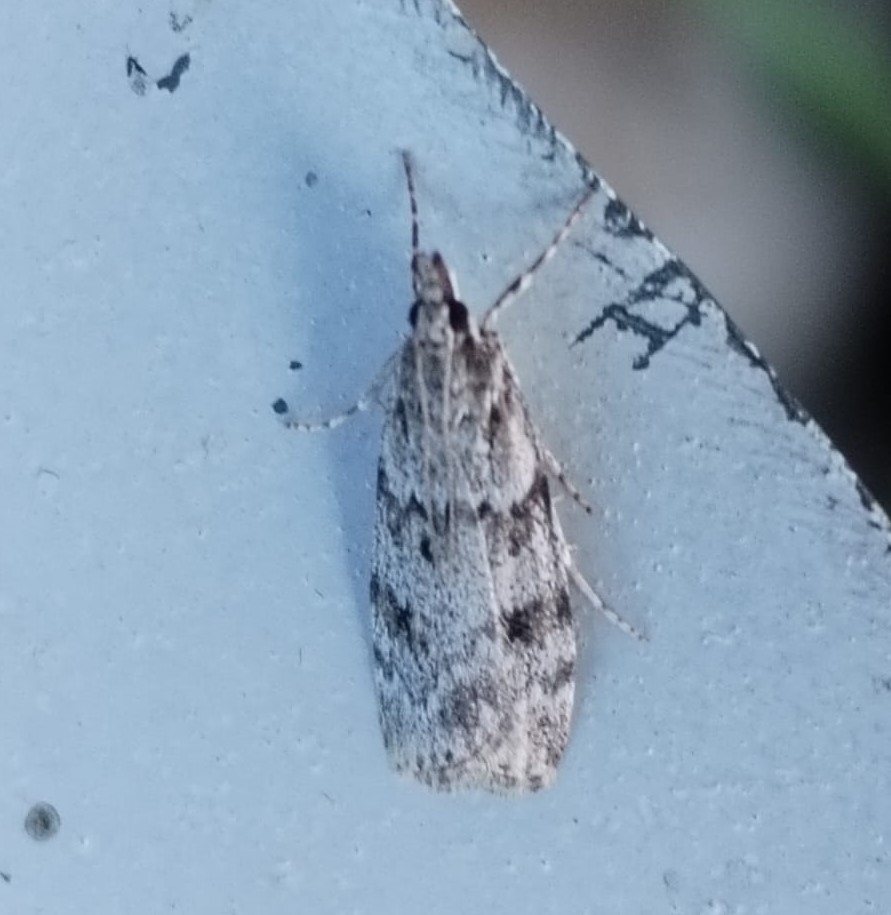 Scopalia ambigualis
Scopalia ambigualis
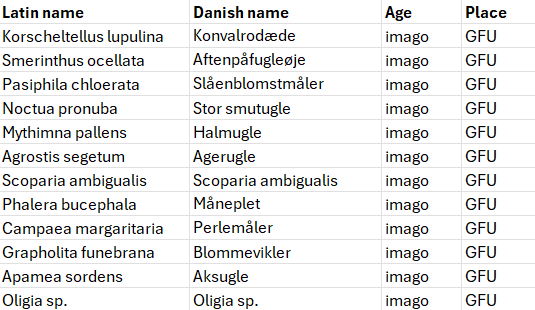
Hans took his trap back home today, he also wants to catch moth in his garden, so from now on I will just catch with one trap.
News of the station: Yesterday evening, Ole arrived at the station to attend today´s board meeting and do some night counts.
Around noon, Henrik also came, he will be here until the end of the month.
And in the afternoon, we welcomed Lara at the station. She is a student and will stay here for her school internship for the next week.
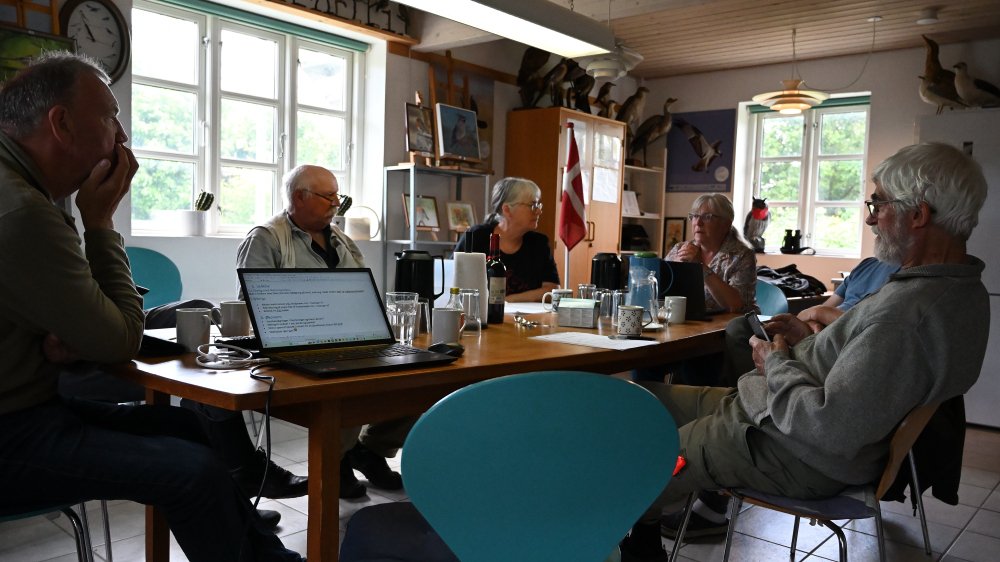
Mere nyt fra fuglestationen: Søndag var der møde i fuglestationens styregruppe, hvor vi diskuterede økonomien og forskellige andre ting af betydning for stationens drift. Referaterne fra møderne er til at læse på fuglestationens hjemmeside, efterhånden som de er skrevet og godkendt. I mødet lørdag talte vi blandt andet om, at vi mangler frivillige til at hjælpe med havearbejdet, som er en forudsætning for, at ringmærkerne kan komme rundt til nettene, samt for, at haven ser nogenlunde ens ud fra år til år af hensyn til den standardiserede ringmærkning. Vi planlagde også nogle af stationens arrangementer i efteråret.
People: Ole Friis Larsen, Henrik Jørgensen, Jasper Mosman, Hanelie Sidhu, Hans Lind, Mads and Tina Elley, Gert Jeppesen, Bo Kayser, Anne Marie Reith, Søren Mygind, Lara Chrenkova
Looking for birds, butterflies and moths...
The ringing:
Again, a cold June morning started when Jens and I went out opening the nets. Jens got two recaps and two new birds today, but for me it was 07.15 until I got my first and only bird to handle today, a recapture Blackbird “Solsort”.
Jens left today after ringing and checking the tip, hopefully, there will be some more birds at his next stay at the station.
The moths:
There were 16 moth species in the traps today, one difficult Oligia needed to remain unidentified. The other moth were all species I knew already quite well so due to the lack of birds, I was already finished with identifying all moth by 06.00.
That was effective, but I would not have minded a bit more work…
My favourite species of today were Phalera bucephala “Måneplet” and Aphomia sociella “Humlevoksmøl”.

Phalera bucephala “Måneplet”
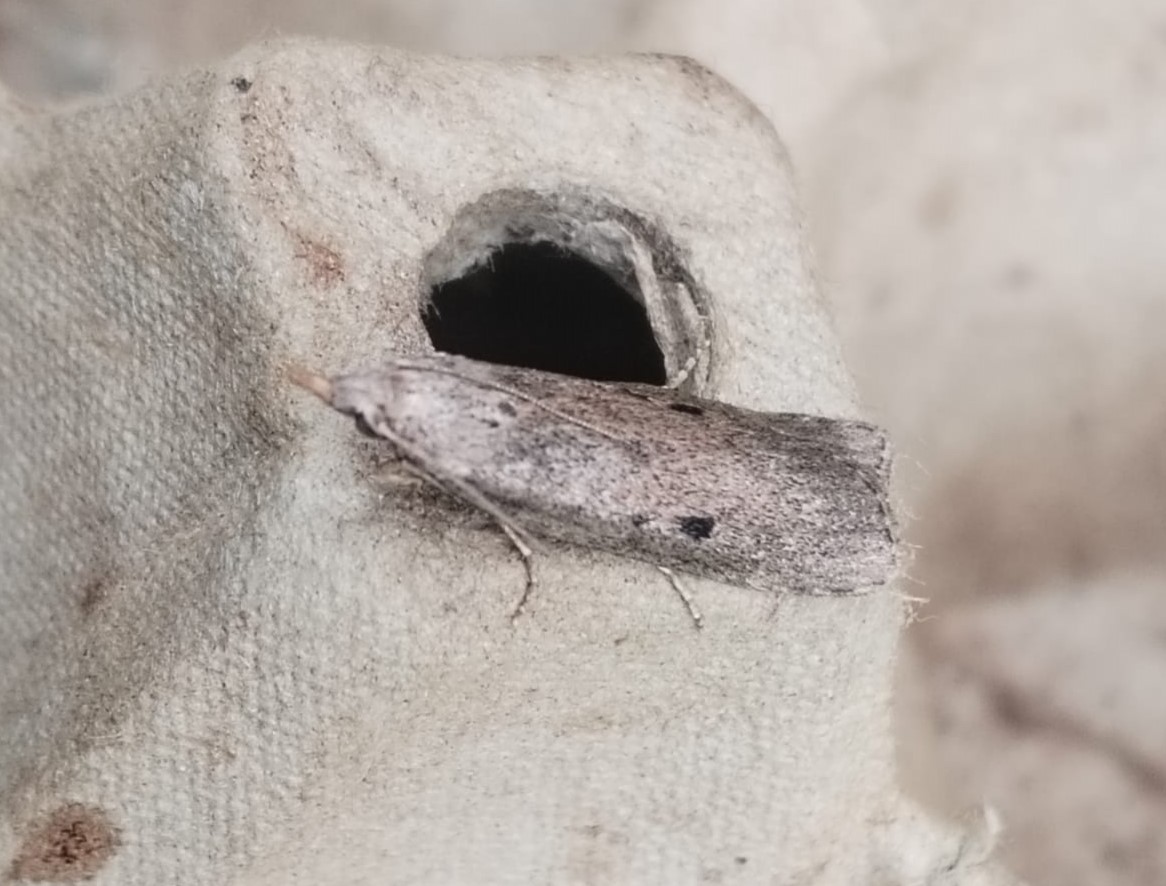
Aphomia sociella “Humlevoksmøl”

There should be at least one bird picture in a bird observatory´s blog, but I just did not have one until Gert and I did a short trip to look for butterfiels at the dyke of Gedesby strand this afternoon. There were not many butterfly species flying but we saw this beautiful Stonechat "Sortstrubet Bynkefugl", so here it is, the bird picture. Mission completed for today!
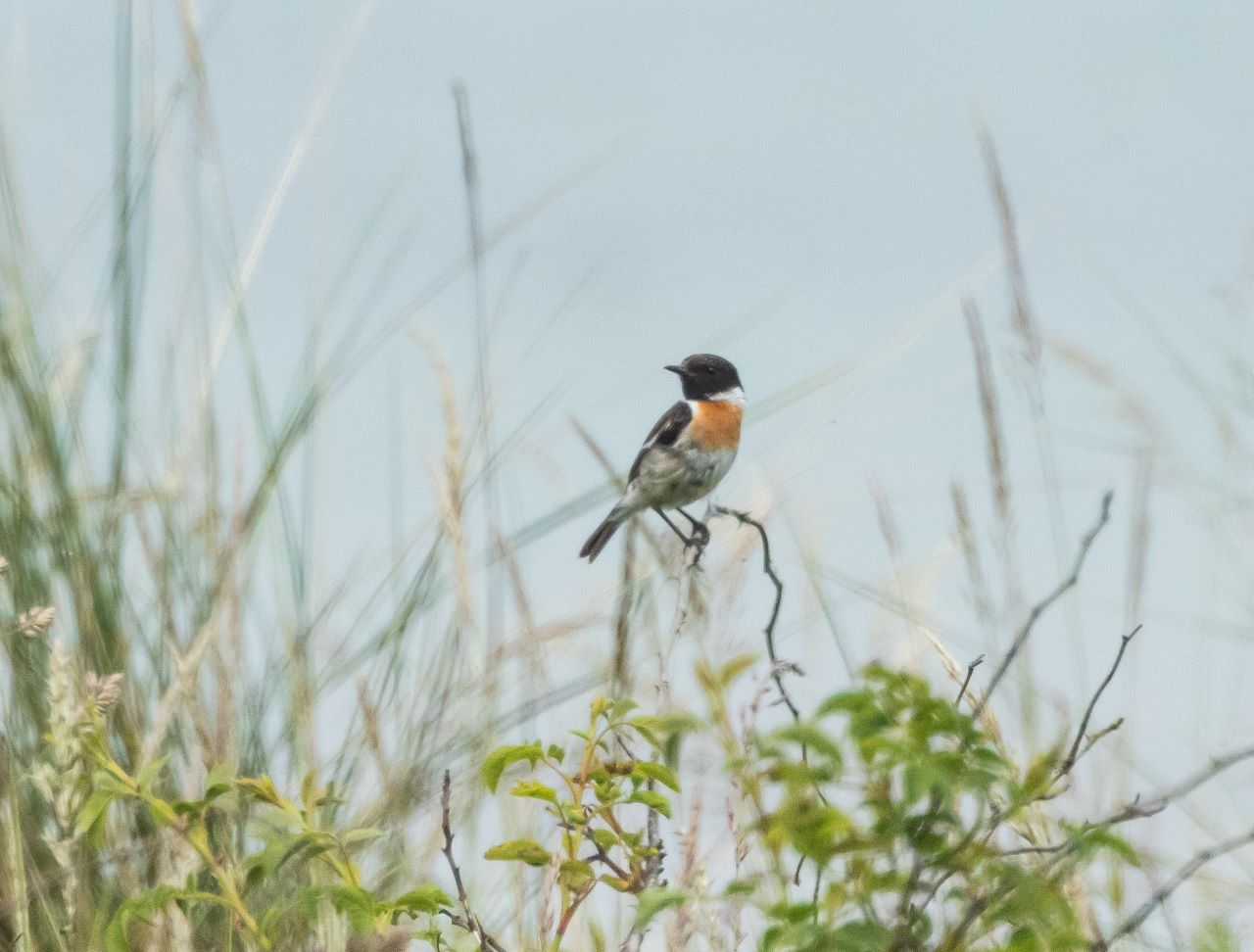
Stonechat "Sortstubet Bynkefugl", Foto: Gert Jeppesen
People: Jens Friis-Walsted, Gert Jeppesen, Tina Elley, Jasper Mosman, Hanelie Sidhu
Bird yougsters in hand!
The ringing:
Today, there was a little bit improovement compared to the last days. In total, we got twelve birds during standard time. The day started well, in the first round, I took out two first calendar year Blackbirds “Solsort”. I am always amazed, when I see them in their plumage from the nest. And to be honest, sometimes I whish they would just keep their spotted breasts and the orangish spots on the coverts.

1K Blackbird "Solsort"
But then, it would not be special any more, so let time take its course.
Maybe we are getting some more birds in the nets now, as the juveniles leave their nests? In the afternoon,
Jens managed to catch the third 1k of the day, a Hooded Crow “Gråkrage”!
The moths:
When I went to the moths trap by the house this morning, I got really excited and amazed! There was a big, quite colourful and beautiful moth sitting on the wall by the trap, that I had never seen before. This is even better than catching a Acheronita atropos “Dødningehoved aftensværmer”, I thought by myself, I was very happy about that moth. Soon I found out, that it was Cerura vinula “Hermelinskåbe” that came to the trap tonight. It is not a rare species, actually it has been found all over Denmark, especially at the coasts, but most sightings have been here in Sjelland.

Cerura vinula “Hermelinskåbe”
But there were also other new moth species in the traps today. I will show Lomaspilis marginata “Sortrandet måler” and Dysstroma truncate “Jordbærmaler”.

Lomaspilis marginata “Sortrandet måler”
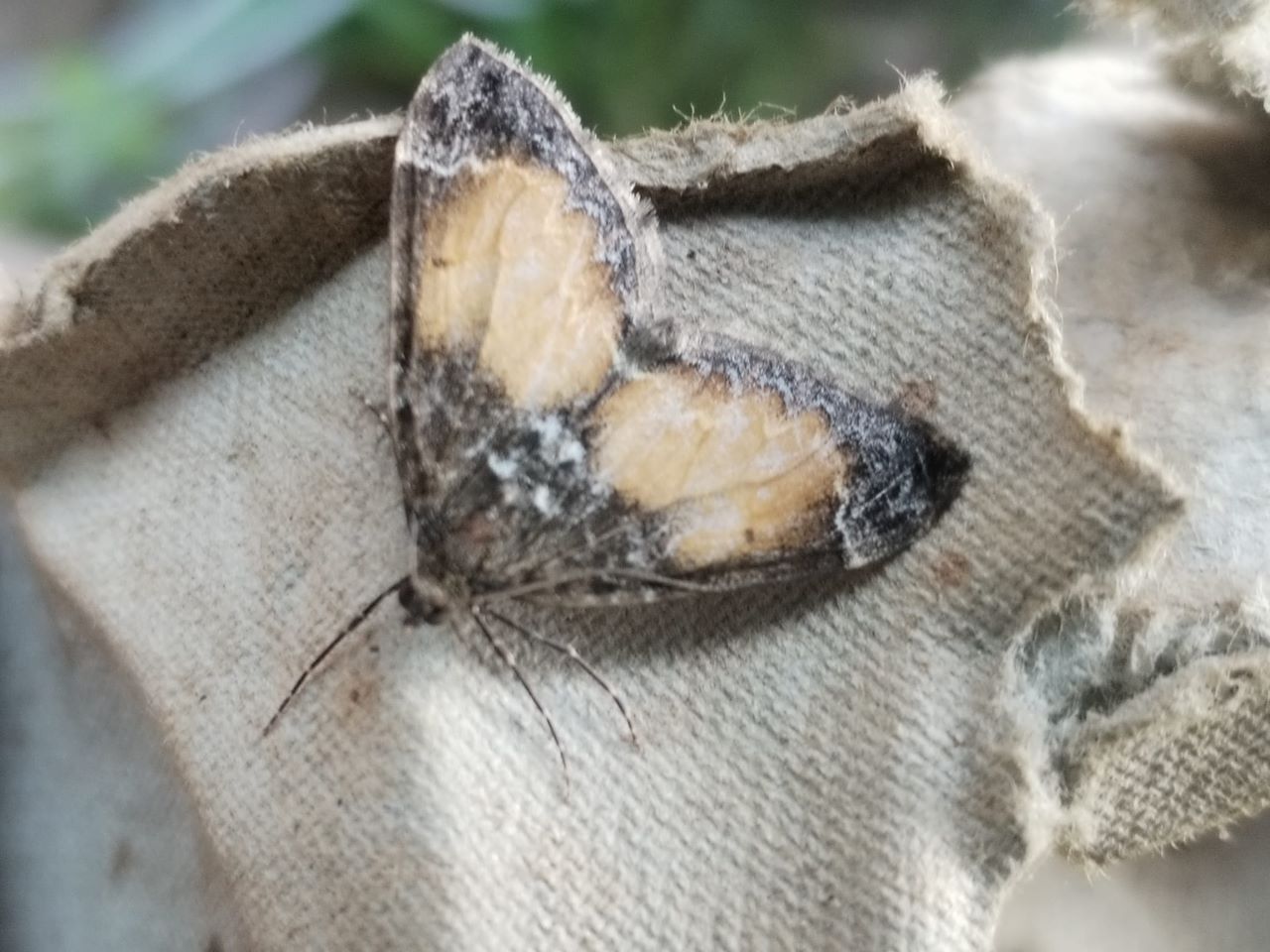
Dysstroma truncate “Jordbærmaler”
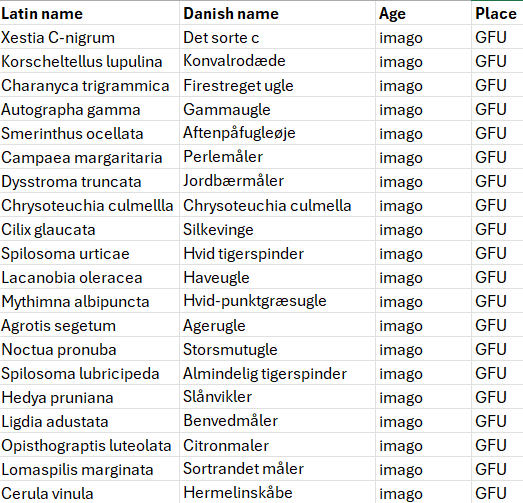
People: Jens Friis-Walsted, Jasper Mosman, Hanelie Sidhu
Steps
The ringing:
At the moment, mostly means keeping yourself fit by walking regularly the same route through the garden. We are always very disciplined, keeping the times. We are getting rewarded by being kept moving, I am sure, as a ringer, you do all the necessary steps a person should do a day. A very healthy job. Sometimes, we find a bird in the net, that is also a big reward, for all the steps. There will come days at the station, when all the nets will be full of birds and we will feel their weight around our necks, when we bring them to the lab. But this is not now. Today four new birds. One was a female Black Redstart “Husrødstjert”, a nice bird and just the fourth ringed in this season. Usually, they do not come to the garden so often.
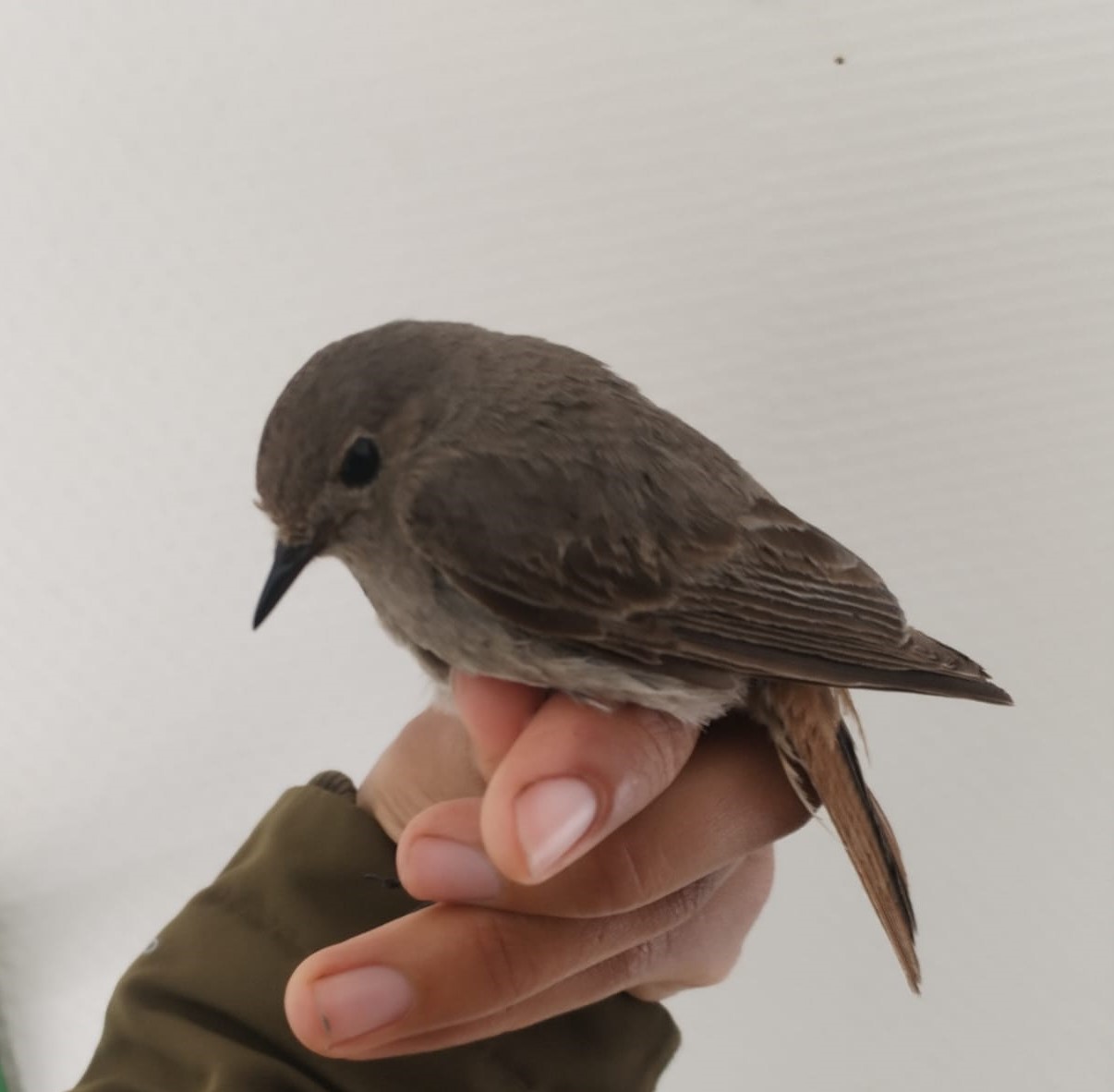
Black Redstart “Husrødstjert”
The moths:
First of all, yesterday´s blog is updated with the moth list, it was 22 species, so quite good!
Today, there was less, 16 species and one needed to be left unidentified. Some groups a very difficult and difficult individuals can just be identified by genital analysis to be sure.
My favourite – and I think also a new species – was Paraponyx stratiotata “Vandpesthalvmøl”. I found out, that the larvae lives quite deep in the water and feeds on water plants.

Paraponyx stratiotata “Vandpesthalvmøl”
Another quite easy to recognise species of today was Campaea margeritaria “Perlemåler”.
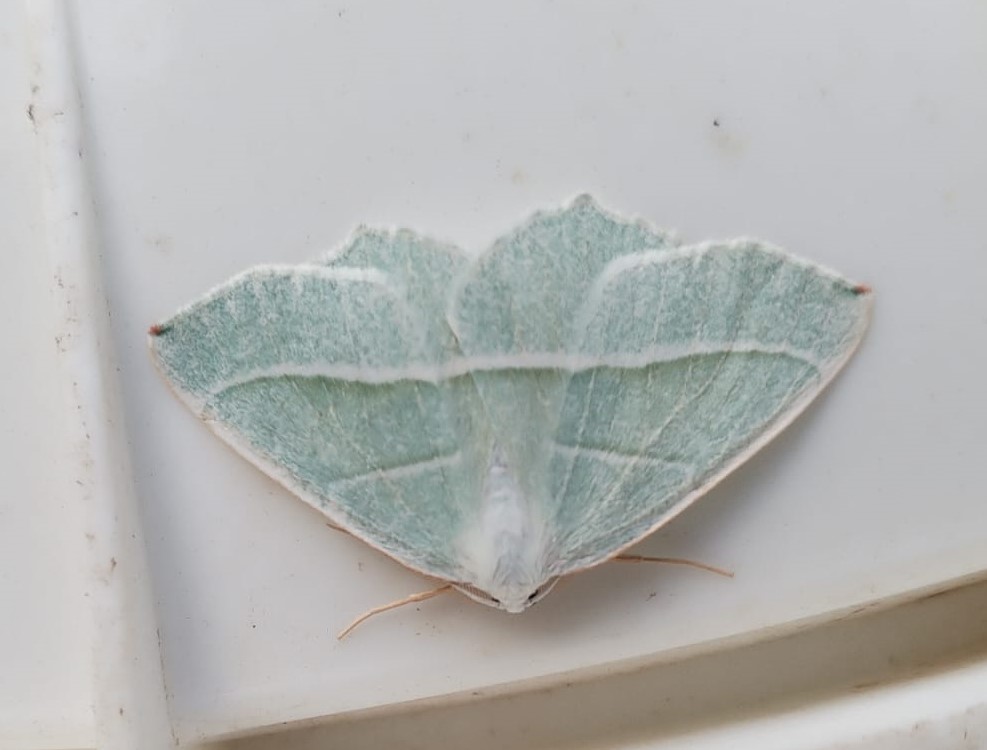
Campaea margeritaria “Perlemåler”

News of the station:
The grass in the garden is short again, thanks to Henning Gammel, who mowed the lawn this afternoon.
People: Henning Gammel, Tina and Mads Elley, Gert Jeppesen, Jasper Mosman, Jens Friis-Walsted, Hanelie Sidhu
A new species for Denmark
The ringing:
The morning was a bit windy and cold again. It brought us more recaps than new ringed birds, but some nice species as Red-backed Shrike “Rødrygget Tornskade” and the first first calendar year bird of the season, that flew into the net: A Starling “Stær”.
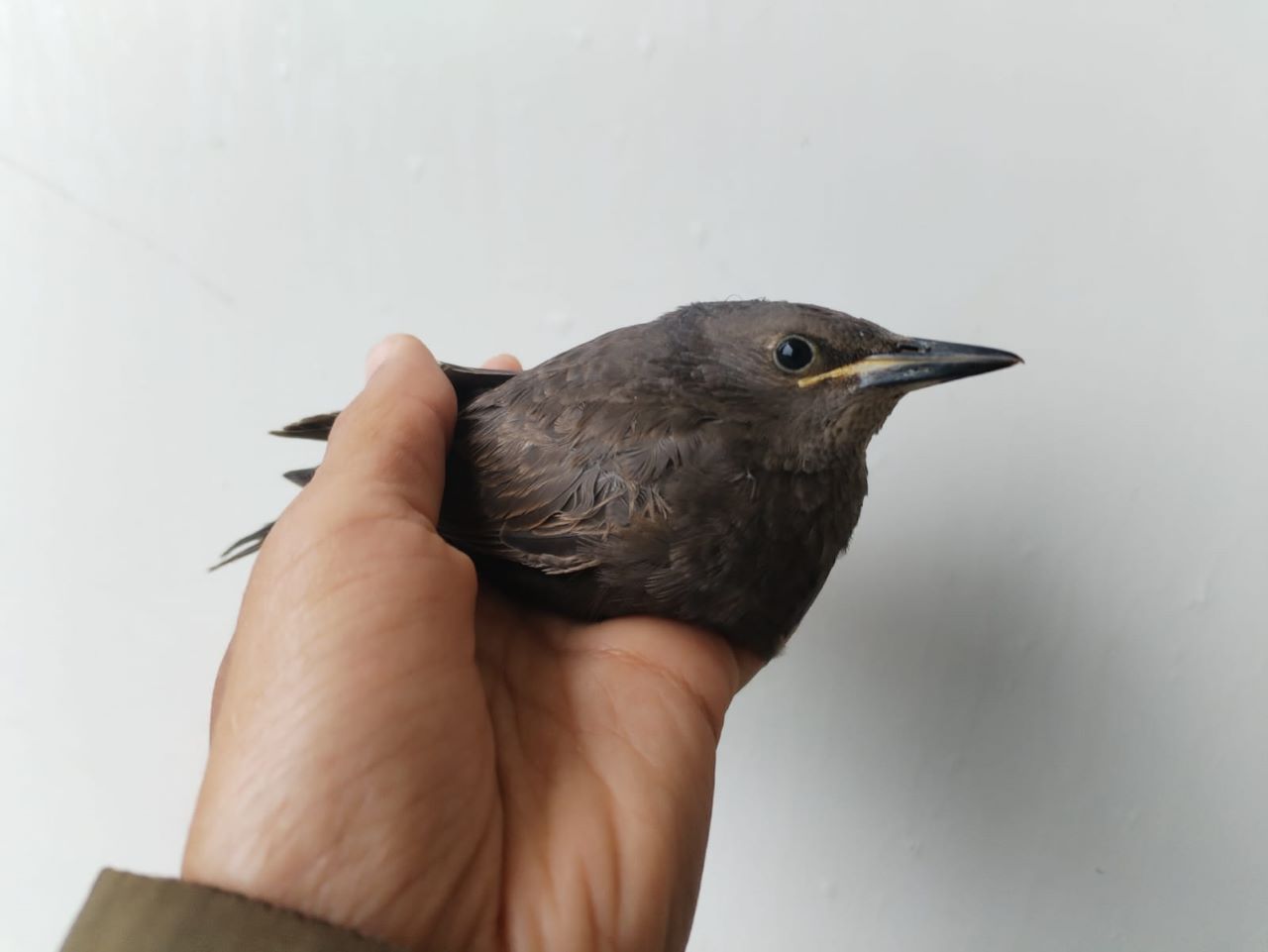
1k Starling "Stær"
A new species for Denmark:
After ringing, Gert came to the station. Soon, he got a notification on bird alarm, that a Pygmy Cormorant “Dværgskarv” was seen at Lystrup. It is a new species for Denmark and after a short time, Gert decided, we should see it. When Gert, Jens and I arrived at Lystrup, there were already many birders and I was a very cooperative bird, it was sitting on top of a dead tree all the time, very well visible for all.

Pygmy Cormorant "Dværgskarv"
The moth:
There were quite some moth species in the traps today, many I find every morning so it is usually easy to identify them. One species, that is in the traps regularly and usually very easy to identify is Oligia strigilis “Hundegræsugle”. Today I found a very dark moth of which I was wondering, if it was a new species for me, but after consulting the identification apps, books and Gert, I found out, that it was just Oligia stigilis “Hundegræsugle”. I will show a picture of how I am used to it and this dark one today, to show, how much variation there can be in some species.
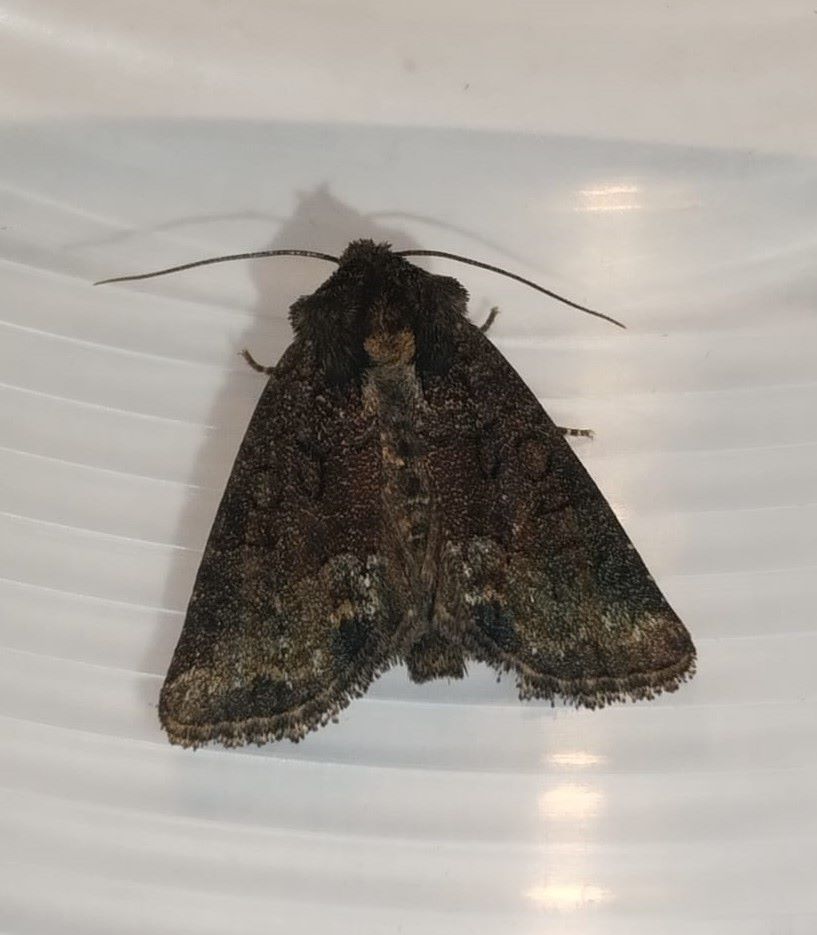
Today´s very dark Oligia strigilis.
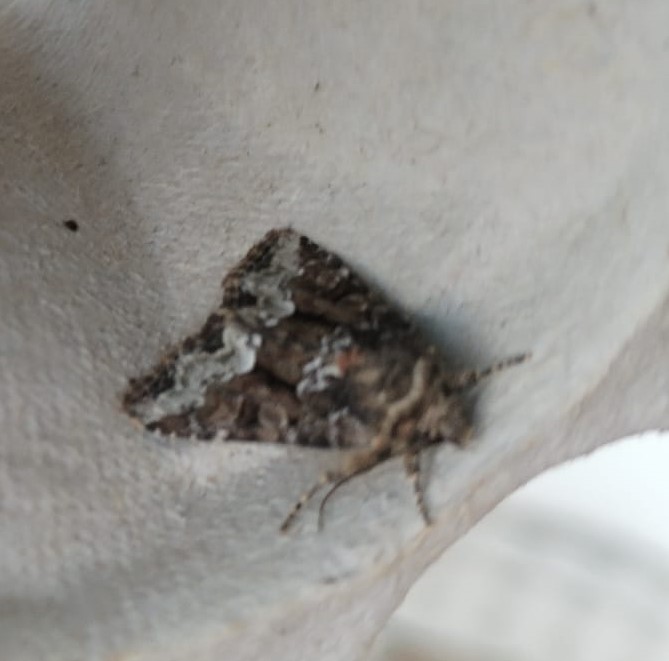
Oligia strigilis how I am used to it.
I will also put a picture of Aspilapteryx tringipennella in this blog, Robert has already used a picture of it in one of the previous blogs, but I think, it is quite nice to see it sitting on my thumb, to really see how small this micro moth is.
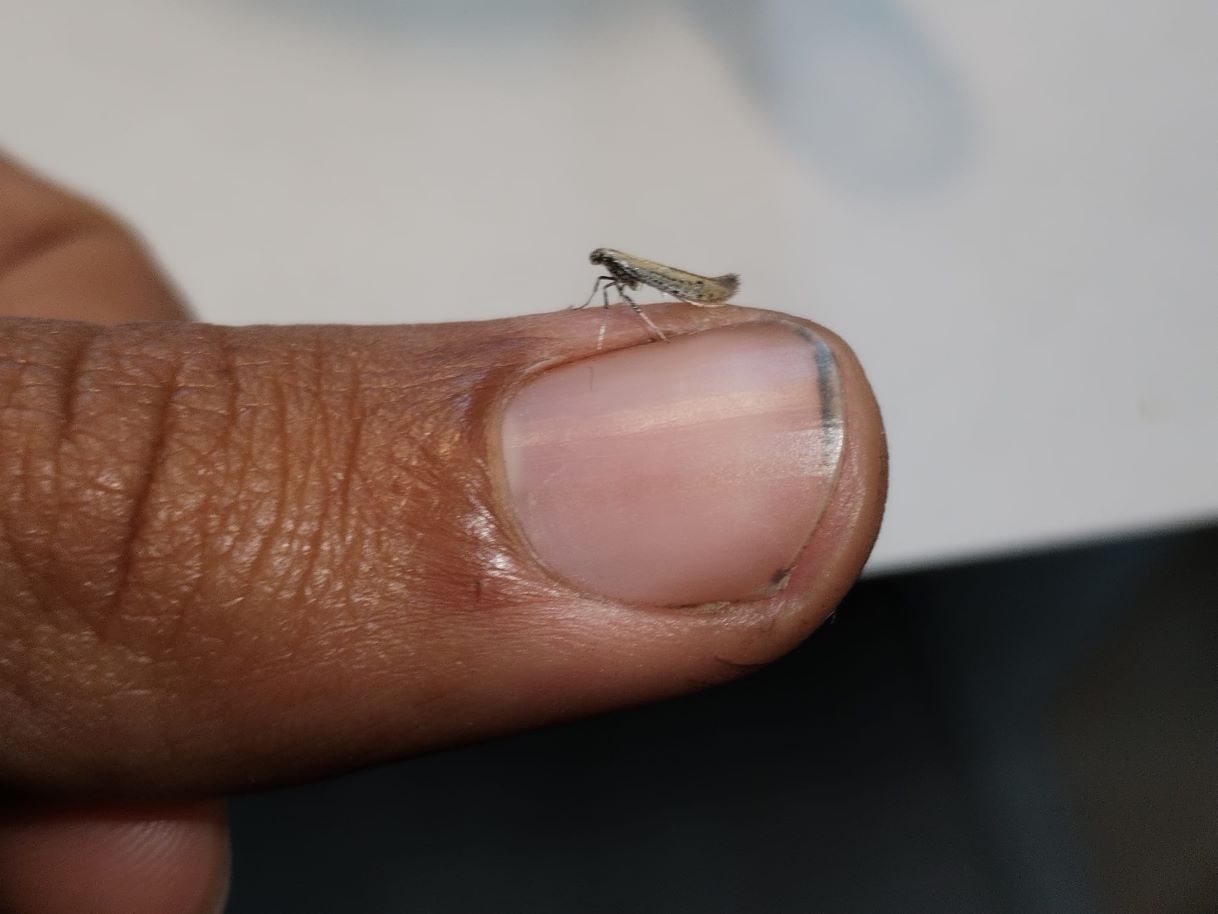
Aspilapteryx tringipennella
Even though, identification with the help of apps still works even for this size. They don´t need to stay a mystery, it is also worth looking at them!
It was quite a long day and I am very tired, so tomorrow, this blog will be updated with the list of the moth species of the day.
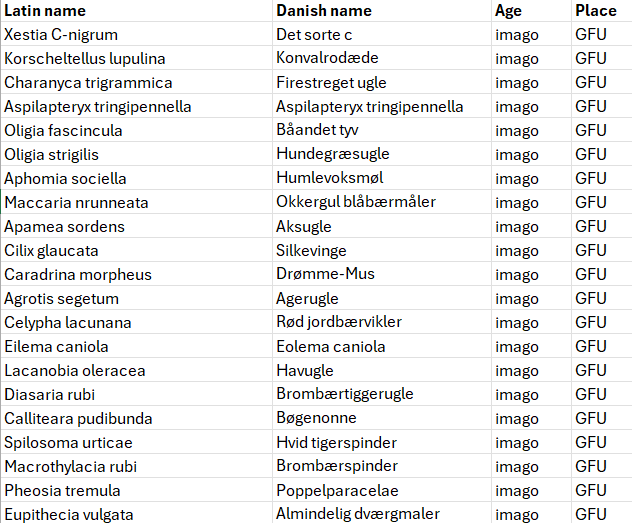
People: Jasper Mosman, Hanelie Sidhu, Jens Friis-Walsted, Gert Jeppesen
Ageing Gærdesanger
The ringing:
Although we are at the southernmost point of Denmark, it is everything else than the warmest and sunniest place here. Actually, this morning it was quite cold, but it was not as windy as yesterday and it was a bit cloudy, so we got some more birds than yesterday, 14 in total. This is not a number we are hoping for, but honestly, the season is nearly over and birds are already breeding, so we can´t really expect higher numbers than we had in May. Of course you never know and rarities can show up, so let´s be optimistic. Here a pretty picture of a recap Lesser Whitethroat “Gærdesanger”, that went in the net today. It kind of also fits to the topic of the day, as later in the afternoon, I met the volunteers from Skagen Fuglestation on zoom to give an aging session of Lesser Whitethroat “Gærdesanger”, that I had promised to prepare when I left Skagen about a month ago.
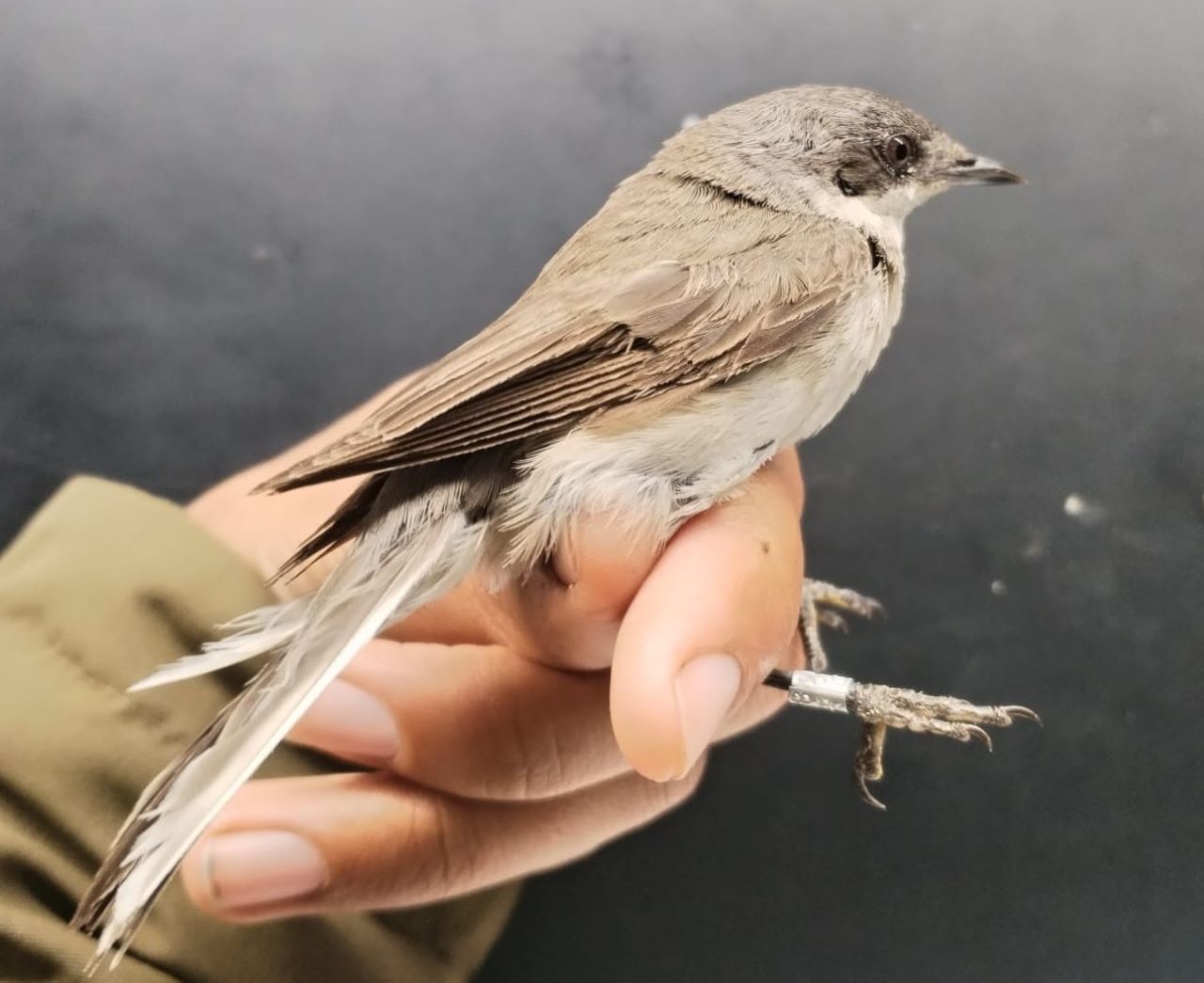
Lesser Whitethroat "Gærdesanger"
The moths:
18 moth species were in the two traps toady. My favourites were Calliteara pudibunda “Bøgenonne” and Acronicita tridens/psi “Treforkugle/Psi-ugle”.
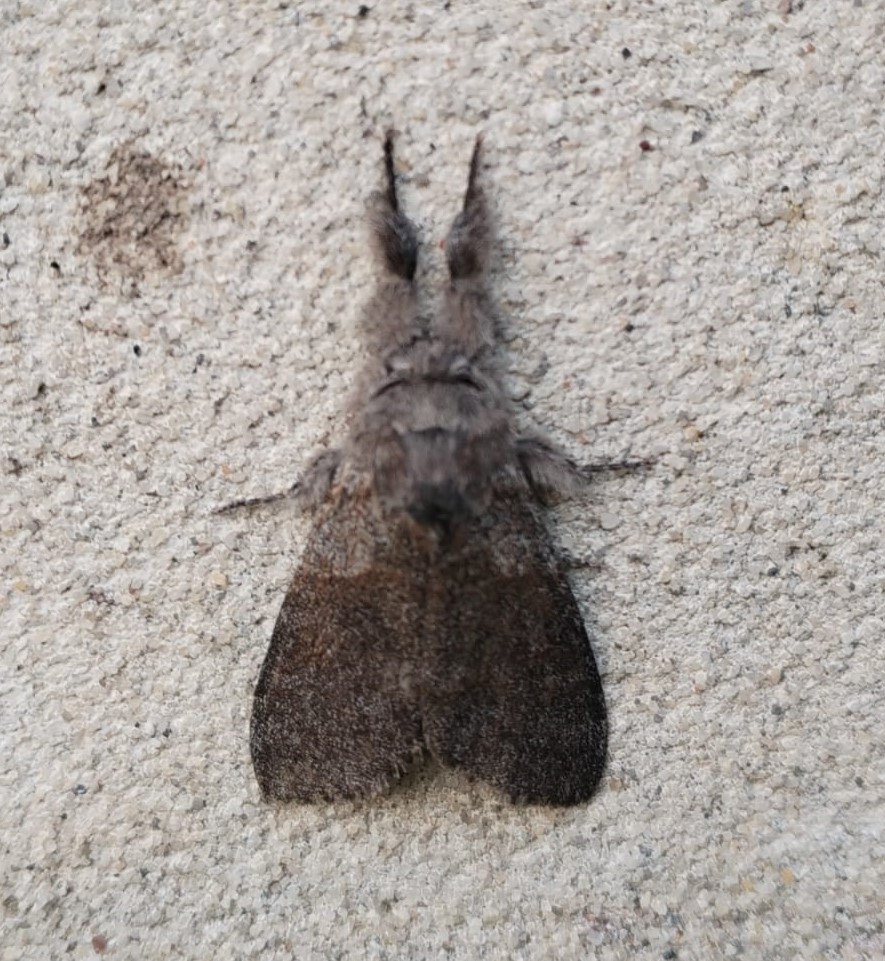
Calliteara pudibunda “Bøgenonne”
This is a male of Calliteara pudibunda, as it is greyish, while the female would be lighter and more sandy coloured.

Acronicita tridens/psi “Treforkugle/Psi-ugle”.
Acronicita tridens can not be differentiated from psi according to outer characteristics. Psi is a lot more common than tridens though, which would be quite rare here, so it is by far more likely, that it is psi that was in the trap today.
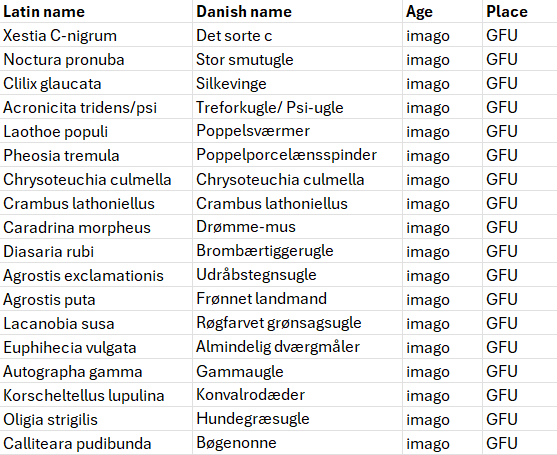
People: Jasper Mosman, Gert Jeppesen, Hans Lind, Tina Elley, Hanelie Sidhu Jens Friis-Walsted and Karsten
